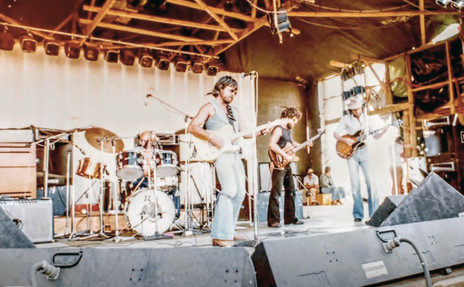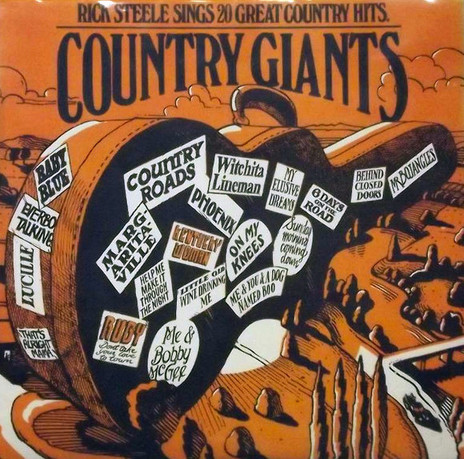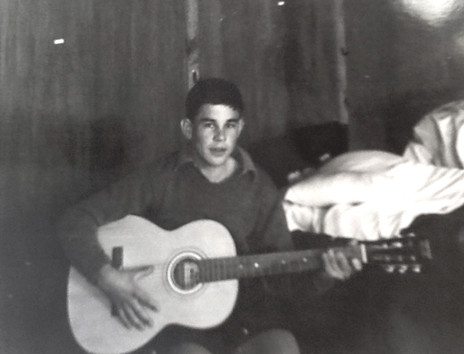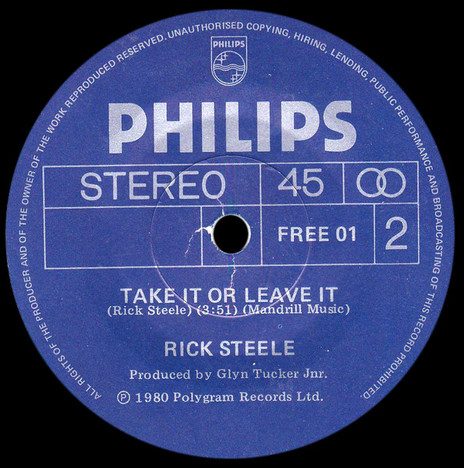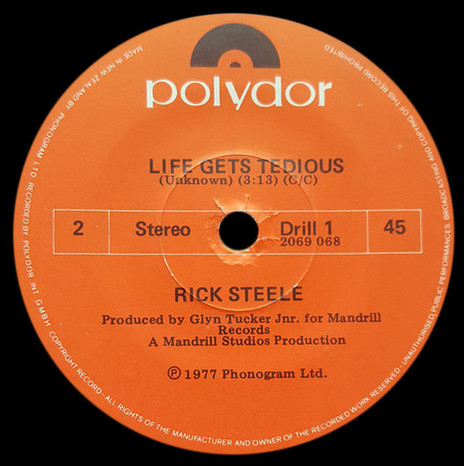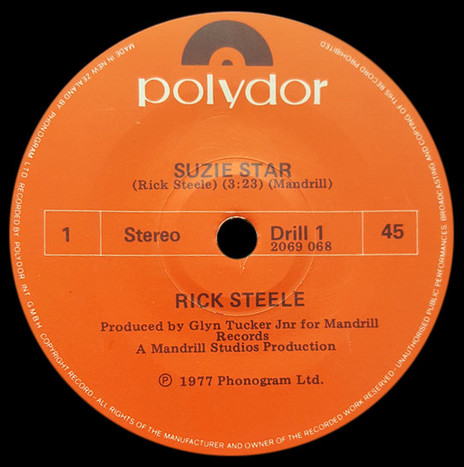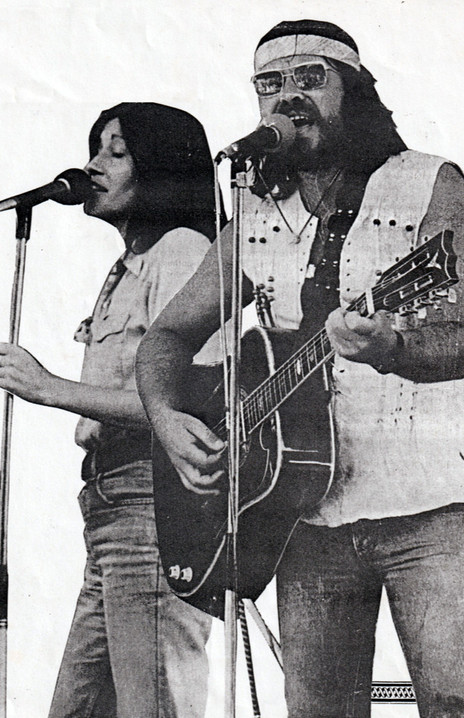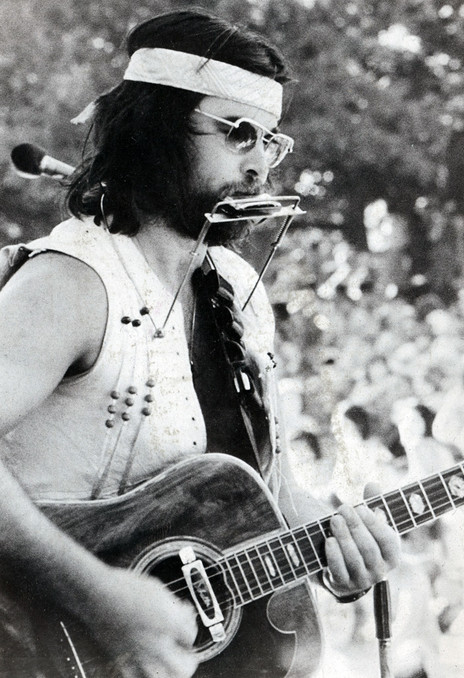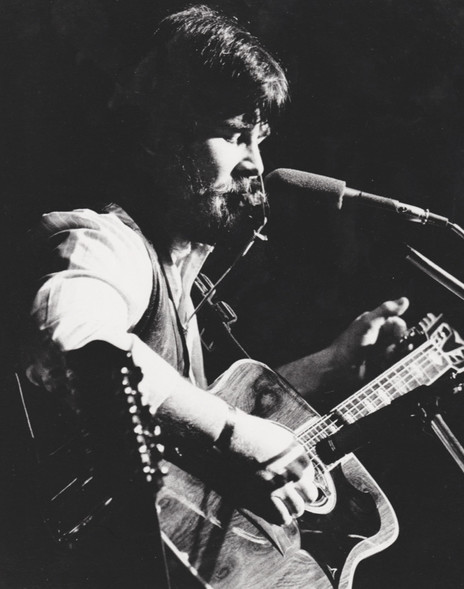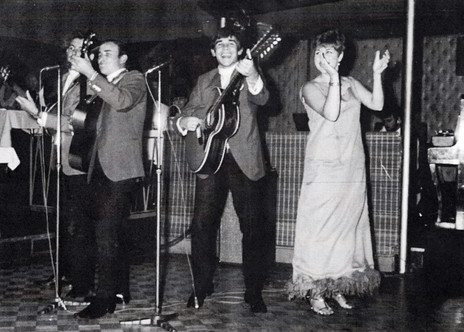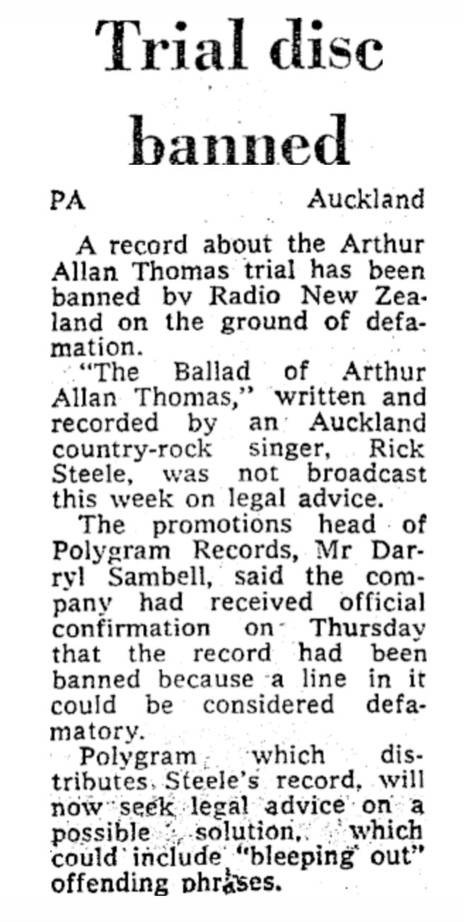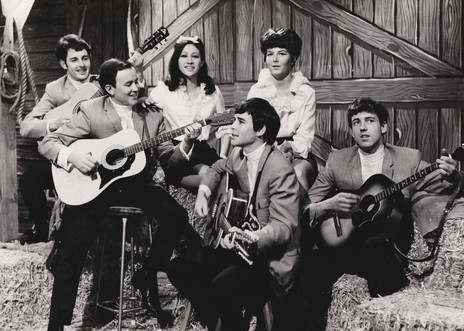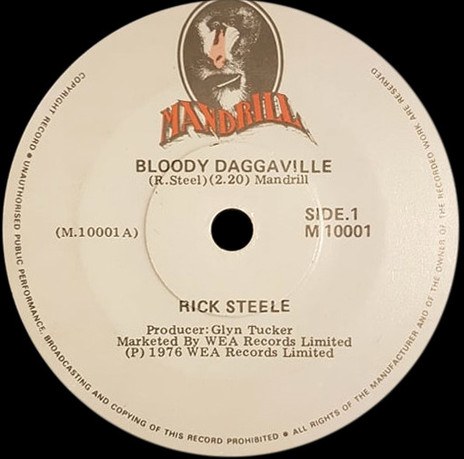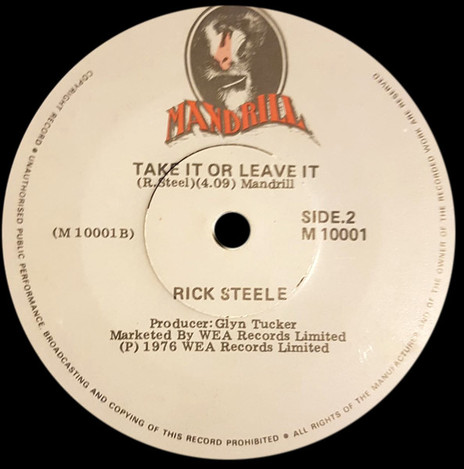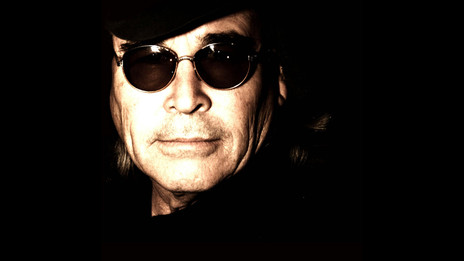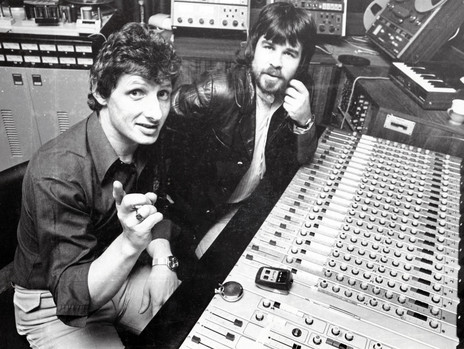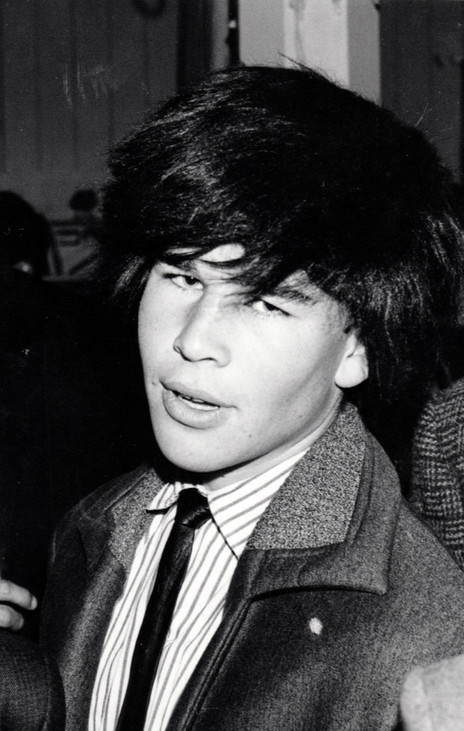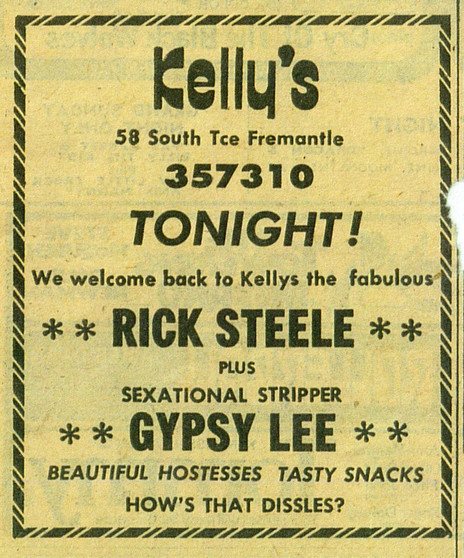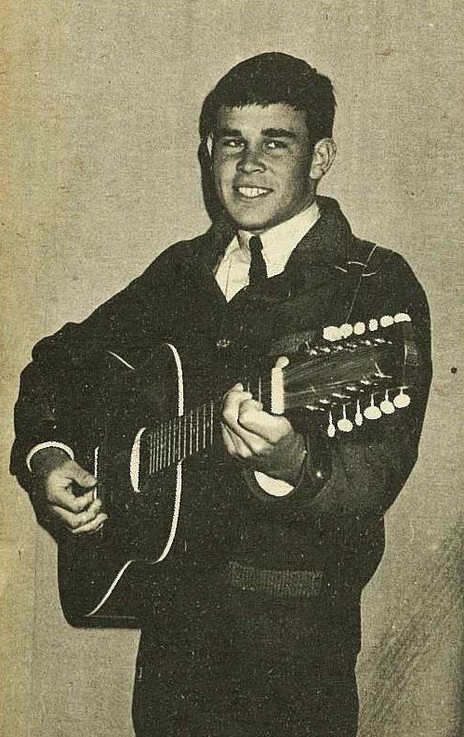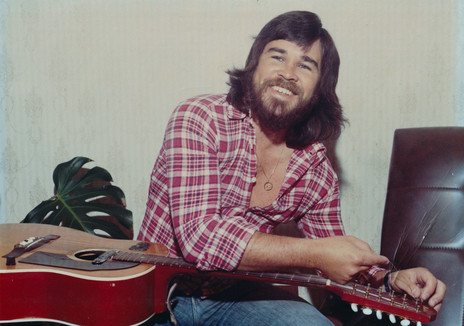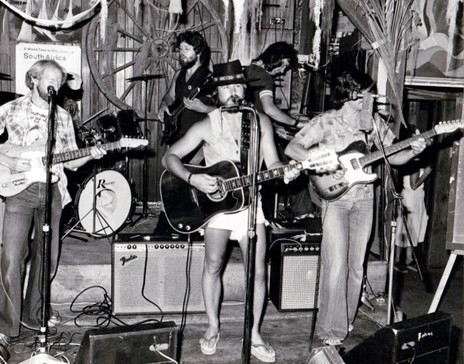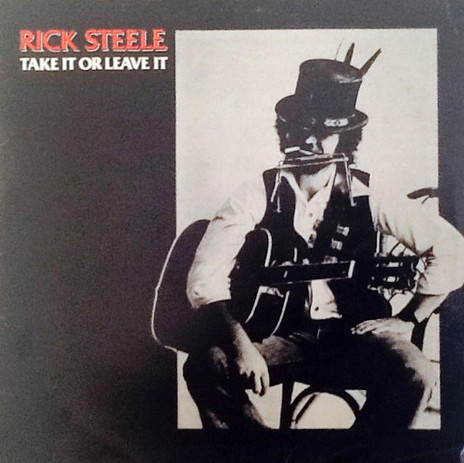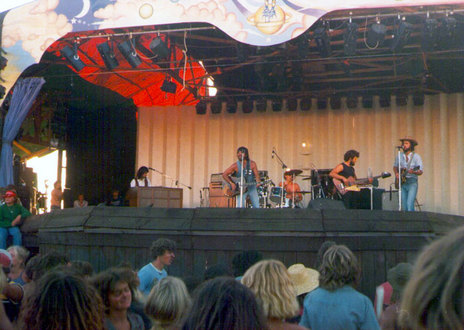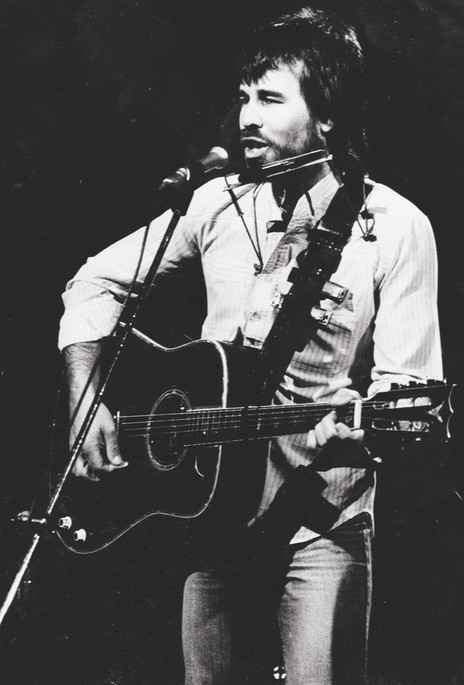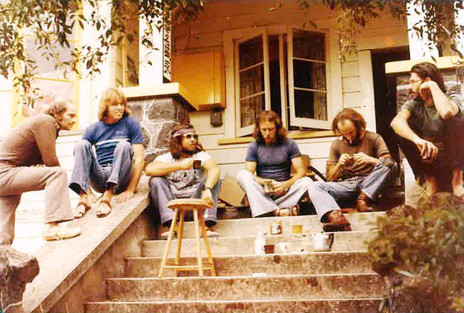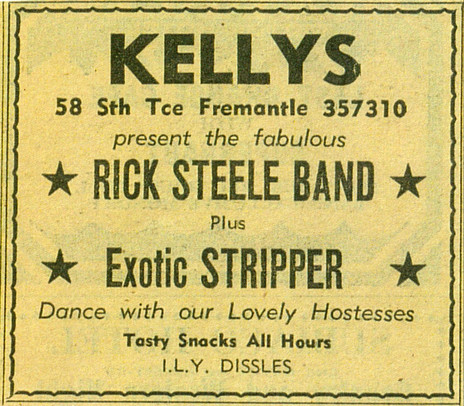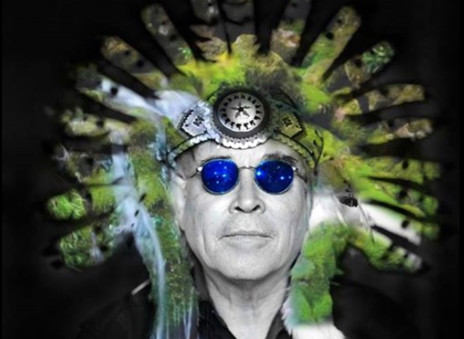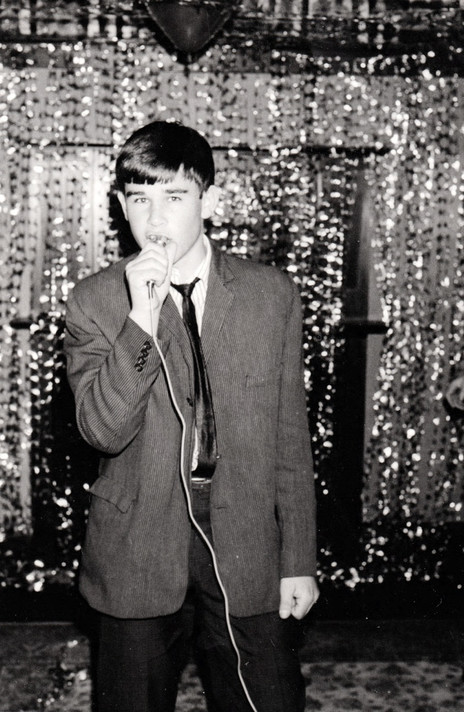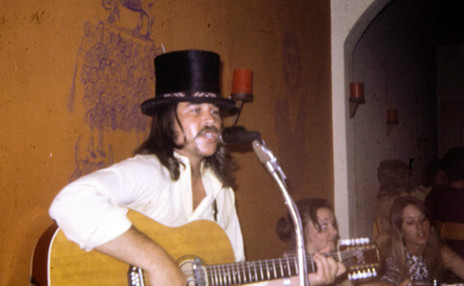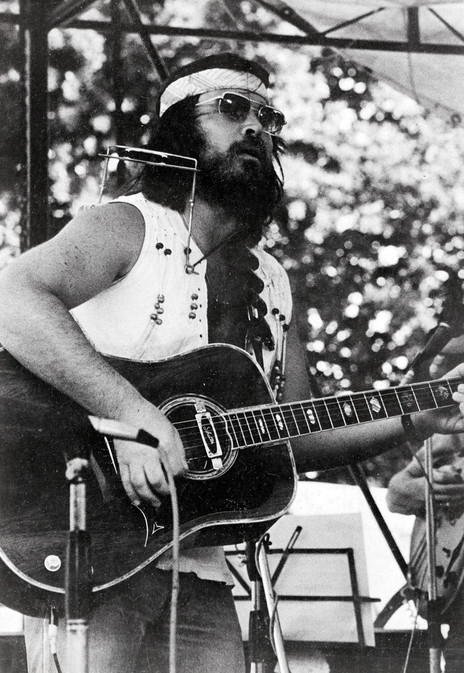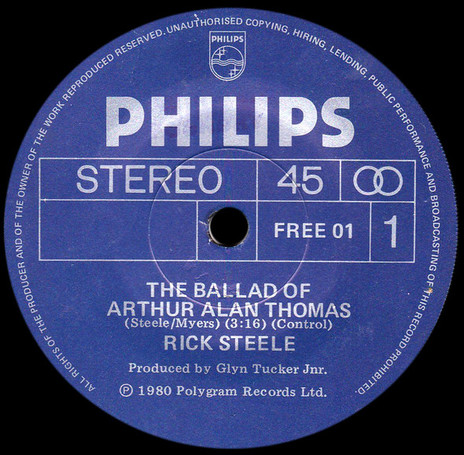Tucker offered Steele a deal and the singer returned to New Zealand in 1976. That year, his ‘Bloody Daggaville’ was the first single released on Tucker’s new Mandrill label; Take It Or Leave It became the first album on the imprint the following year.
“His timing was impeccable,” Tucker said. “I was keen to launch my own label, and Rick’s sense of humour and vocal presentation hooked me. I saw in Rick a commercial country singer/songwriter that might fit the current trend of the 1970s. He called it back porch music. All you needed was an acoustic guitar, a harp, a song and a back porch!”
Steele incurred the wrath of the authorities at the end of the decade when the National Government bandied about accusations of treason and defamation as they ordered all copies of his single ‘The Ballad Of Arthur Allan Thomas’ be banned from broadcast and destroyed.
Steele incurred the wrath of the National Government with ‘The Ballad Of Arthur Allan Thomas’.
The song namechecked the crooked cop who planted evidence that pointed to Thomas as the killer in the Crewe murders in 1970, as well as finishing with Steele chanting, “the man was framed/ Arthur Allan’s not to blame”. Much later, Steele liberated a copy of the 45 from his late mother’s record collection.
It was Steele’s Bob Dylan/Rubin “Hurricane” Carter moment. With the first Sweetwaters festival approaching, the song was re-recorded with new lyrics and there was even a plan to have the newly pardoned Thomas flown in to join the band on stage. It didn’t happen but part of Steele’s performance of ‘The Ballad Of Arthur Allan Thomas’ did screen on a Radio With Pictures Sweetwaters special.
With his Hot Biscuit Band, Steele performed regularly around the top half of the North Island before returning to Perth in 1981, where he released more albums, helped form the Perth Blues Club and was inducted into the West Australian Music (WAM) Hall Of Fame.
The son of an Anglican minister, Richard Warwick Steele was born in Auckland in 1948. Harold Steele was the vicar at St Barnabas Anglican Church in Mt Eden from 1949 to 1969 and was the Archdeacon of Waitemata from 1965 to 1972.
Rick Steele’s mother played the pipe organ in the church and led the choir but refused to buy her son a guitar for fear he would turn out like Elvis Presley. Steele’s older sister had bought Presley’s ‘Blue Suede Shoes’, and at the age of eight or nine Steele had performed it in primary school music class … twice!
A lawn-mowing run earned enough money for Steele to buy his own guitar, which he took with him to boarding school at King’s College in Ōtāhuhu while his parents undertook a church exchange to England. Steele and his older brother John spent school holidays with the St Barnabas curate Waiohau Rui “Ben” Te Haara, who later became the first Anglican Bishop of Te Tai Tokerau.
At Sunday school the brothers picked up valuable guitar pointers from the class “naughty boy” Peter Solon. His father New Zealand actor Ewen Solon carved out a substantial career in British cinema, including such films as The Dam Busters and The Hound Of The Baskervilles, and on TV. Peter would teach John Steele new chords and he would pass them on to his little brother.
Around 1963, Rick Steele took a bus into town and discovered the Top 20 Nitespot. One Saturday afternoon he asked resident band The Premiers if he could sing a song with them, performing Chuck Berry’s ‘Reelin’ And Rockin’’. He soon became friendly with The Dallas Four and would tune in to shortwave radio from Sydney whenever a new Beatles single was due.
While at Auckland Teachers’ College, Steele joined a group of other trainee teachers in The College Folk ensemble led by former Gremlins bass player Ben Grubb and Jennifer Andrews, the daughter of Sorrento compère and singer Les Andrews. The College Folk appeared on The Country Touch and Rick Steele also scored a few solo spots on the NZBC show.
Two segments of the programme would be filmed from start to finish on Saturday afternoons, usually in time for backing group The Hamilton County Bluegrass Band to get to The Poles Apart. But on one occasion, a singer couldn’t get through ‘Harper Valley PTA’ without making a mistake. Each time she did, the entire segment would have to start again. While filming continued till past 10 o’clock, Steele took the opportunity to get to know host Tex Morton.
When The College Folk came to an end, Rick and John Steele joined singer/guitarist Sel Nash and Beth Russell in vocal group The Vision. They found a manager in Roger Brill and he had them working floorshows all over Auckland. He organised a recording session at Eldred Stebbing’s Saratoga Avenue studio, after which Stebbing offered them a contract with his Zodiac label.
The Vision started recording an album in 1969, but only the Carl Perkins-penned single ‘Daddy Sang Bass’, on which Steele sang the hook, saw the light of day. The flip side was ‘Tom Cat’. The 45 was produced by Jimmie Sloggett and featured former Invaders Jimmy Hill and Dave Russell.
Throughout the lifespans of The College Folk and The Vision, Steele had been a probationary teacher at Waterlea School in Māngere Bridge and Flat Bush School in Ōtara. It wasn’t uncommon for the pupils to greet him with, “We saw you on TV last night!”
When his probationary period was up, Steele had second thoughts about teaching and took off to Australia. He stayed in Melbourne where his brother John was employed as a reporter at The Age.
After working at a car wash there, he decided to get even further away. He recalled sharing a beer in Auckland with New Zealand test cricketer Bob Cunis, another schoolteacher. Cunis had had his jaw broken by a bouncer from Australian bowler Graham McKenzie while playing Western Australia in Perth. Sucking up beer through a straw, Cunis remarked how beautiful the city and its beaches were.
A STUDIO ENGINEER SUGGESTED STEELE SHOULD RECORD ORIGINALS INSTEAD OF RELYING ON COVERS.
Rick Steele arrived in Perth on April 1, 1971 – April Fool’s Day. He got a job teaching Grade 4 and 5 children at Eden Hill Primary School and started getting gigs, graduating from The Bushranger to The Spanish Onion to the Norwood Hotel, The Grosvenor and The Concert Hall Tavern. Upstairs at the latter, he encountered real blues music for the first time when he saw Sonny Terry and Brownie McGhee. He went out the next day and bought a harmonica.
After being invited to do some recording at the Australian Broadcasting Corporation, the engineer suggested he should try writing his own songs instead of relying on the Neil Diamond and Roger Miller covers that were popular in the pubs. It didn’t take long for Glyn Tucker in Auckland to show some interest in recording the new songs.
Tucker and Dave Hurley’s Mandrill Studios had just updated to a 16-track Ampex tape machine and an Allen & Heath mixing console. They added a Kawai grand piano and installed a homemade plate reverb system. The next step was a Mandrill label and Steele was an ideal candidate to set the wheels in motion.
In 1976, Steele and his new wife Liz rented out their Yokine house and travelled to Auckland. Almost immediately, Steele found a place playing solo on the breweries circuit, being flown around the country playing a week in Taupō here, a week in Motueka there.
Later in the year, the new label was launched with ‘Bloody Daggaville’, Steele’s talking blues reworking of ‘Bloody Orkney’, a World War II poem by Hamish Blair, with a Steele nod to Fred Dagg. The B-side was ‘Take It Or Leave It’, a story of a musician taking a working girl from Kalgoorlie to Perth.
Steele was flown to Avalon in the middle of 1977 to record a film clip singing Kenny Rogers’ latest single ‘Lucille’ for Ready To Roll. In the days before videos accompanied new releases, Steele was backed by Redeye. ‘Lucille’ spent 26 weeks in the NZ singles chart, most of it near the top end, and Steele’s clip received plenty of airtime. He also filmed Jackson Browne’s ‘Ready Or Not’ for Radio With Pictures.
A month or so later, Take It Or Leave It was released. Produced by Glyn Tucker and featuring session players Jimmy Hill, Dave Russell, pianist Peter Woods, pedal steel guitarist Red McKelvie and Headband guitarist Ron Craig, it contained both sides of the single, ‘Ready Or Not’, Kris Kristofferson’s ‘If You Don’t Like Hank Williams’, retitled ‘I Dig Bob Dylan’, and Steele’s own material such as ‘Hangover Blues’ and ‘Trains Can Fly’.
In the second issue of Rip It Up (July 1977), Francis Stark coupled the album with Murray Grindlay’s self-titled Key label LP and wrote a scathing review which in part read: “I found it really upsetting to listen to this record and think of some of the people who could have been using the studio time that went into it.”
Steele countered with a letter to the editor which Rip It Up printed in its August issue. After expressing his delight in the establishment of the magazine, he wrote: “Surely a review should portray something about the record, not merely the reviewer’s comments about his mates who haven’t been in the recording studio lately.” Stark would soon hit the traps with his own punk band, Junk.
A second single, ‘Trains Can Fly’, was released and Steele got as far south as Oamaru and the Woolston Tavern in Christchurch. There were songwriter showcases with John Hanlon, Larry Killip and Waves, and Steele became a regular at Charley Gray’s Island Of Real in Auckland, billed as Rick Steele and Friends. The lineup would include any or all of Red McKelvie, Dave Maybee, Colleen Ralph, Billy Brothers and John Dacre.
He formed The Hot Biscuit Band, named for the King Biscuit Time radio show that ran out of Arkansas in the 1920s and 30s. Bassist Mike Parker was a constant; other musicians to pass through included guitarists Dave Maybee, David Strachan, Mike Myers and Ray Chaber, and drummers Paul Kunac and Mike Abbott.
Steele’s ‘Something Funky’ and ‘Trains Can Fly’ were included on the Nambassa album.
In 1978 came two newly recorded singles, ‘Suzie Star’ and a cover of the Ricky Nelson hit ‘Lonesome Town’. Steele also secured gigs at the Mon Desir, the support slot for Little River Band at Auckland Town Hall and the Nambassa Winter Show Tour that took in Napier, Wellington, Auckland and Hamilton. The Nambassa Festival followed in January 1979, and Steele’s ‘Something Funky’ and ‘Trains Can Fly’ were included on the Festival Music From The 1979 Nambassa Festival double album alongside cuts from Split Enz, The Plague, Schtüng and John Hore [John Grenell].
Steele and The Hot Biscuit Band were a big draw at Hamilton pubs Hillcrest Tavern and the Lady Hamilton, and in summer 1979-80 played a festival at Seddon Park that also included Midge Marsden, Beaver and The Sam Ford Verandah Band. That was followed by the three-date Nambassa Beach Festival tour with Steve Tulloch and Chris Thompson, the inaugural Sweetwaters and the Helensville Country Rock Festival.
When Barry “Dr Rock” Jenkin was moved on from Radio With Pictures at the start of 1980, Steele was one of many potential replacements flown to Wellington to audition for the host’s chair. He ummed and ahhed his way through a mock-up interview with Sharon O’Neill and the gig infamously went to radio jock Phil O’Brien.
In the wake of the ‘Ballad Of Arthur Allan Thomas’ furore, PolyGram managing director Stuart Rubin offered Steele a country covers album to be released on their Music For Leisure label, a sale-or-return racking operation used in non-traditional outlets.
Containing songs picked by Steele and producer/arranger Red McKelvie, Country Giants: Rick Steele Sings 20 Great Country Hits was the only Rick Steele release to see any chart action, spending four weeks on the NZ album chart in July and August 1980 and peaking at No.27.
Later in the year, Steele and his wife, now with two boys under two years old, received a letter from their real estate agent back in Perth telling them their house was in disrepair and could no longer be let. It was an easy decision to take the $5,000 he’d been paid for Country Giants and buy tickets back to Western Australia. They returned 10 years to the day of Steele’s first arrival – April Fool’s Day 1981.
A quick visit to his former agent brought a $50 gig at a Chinese restaurant but things soon picked up. With a fancy Hot Biscuit Band backdrop brought back from New Zealand, Steele formed a new Hot Biscuit Band with blues picker Dave Hole on guitar, Bob Patient on piano, Gary Whittle on bass and Andrew Warburton on drums. A re-recorded ‘Take It Or Leave It’ appeared on the 1981 96FM compilation West. The album also included a track from Billy Rogers and Paul Hewson’s post-Dragon unit The Essentials.
The new line-up ran into trouble with a Perth agent when they refused to sign to him exclusively. It saw them lose the George Thorogood support as well as some gigs in the city. Soon they were driving as far north as Geraldton and Port Hedland, 1630km away, for a month’s work.
IN 2016, RICK STEELE WAS INDUCTED INTO THE WEST AUSTRALIA MUSIC HALL OF FAME.
The band folded in 1987 but after playing as a duo with guitarist Marc Gordon, the pair brought back Whittle and added drummer Richie Pavledis. This version of The Hot Biscuit Band released albums Live At Brian’s, Fires Don’t Burn and Valiant in the 1990s and Steele helped found the Perth Blues Club in 1992. He’s been its president virtually ever since.
By the 2000s, Steele’s children were finding great success in the Australian music business in bands The Sleepy Jackson and Little Birdy. Aside from The Sleepy Jackson, Luke Steele’s other project, electro pop duo Empire Of The Sun, had an international hit with ‘Walking On A Dream’. It has been streamed over half a billion times on Spotify since its 2008 release.
The Sleepy Jackson had Rick Steele as opening act at the Bowery Ballroom in New York City in 2006, and Steele supported Empire Of The Sun in Las Vegas, Reno and Arizona in 2017, travelling on Dolly Parton’s old tour bus. Luke Steele also produced his father’s solo album Through My Eyes, released independently in 2008.
In 2016, Rick Steele was inducted into the West Australia Music Hall Of Fame, whose past inductees included Baby Animals frontwoman Suze DeMarchi, AC/DC legend Bon Scott, the Farriss brothers of INXS, and comedian Tim Minchin.
Rick and Liz Steele were married for 49 years. When Rick passed away on 10 March 2025 Liz described him on Facebook as “a true legend, a voice and a shepherd for the common man, a blues man, a storyteller with a heart of gold.”
